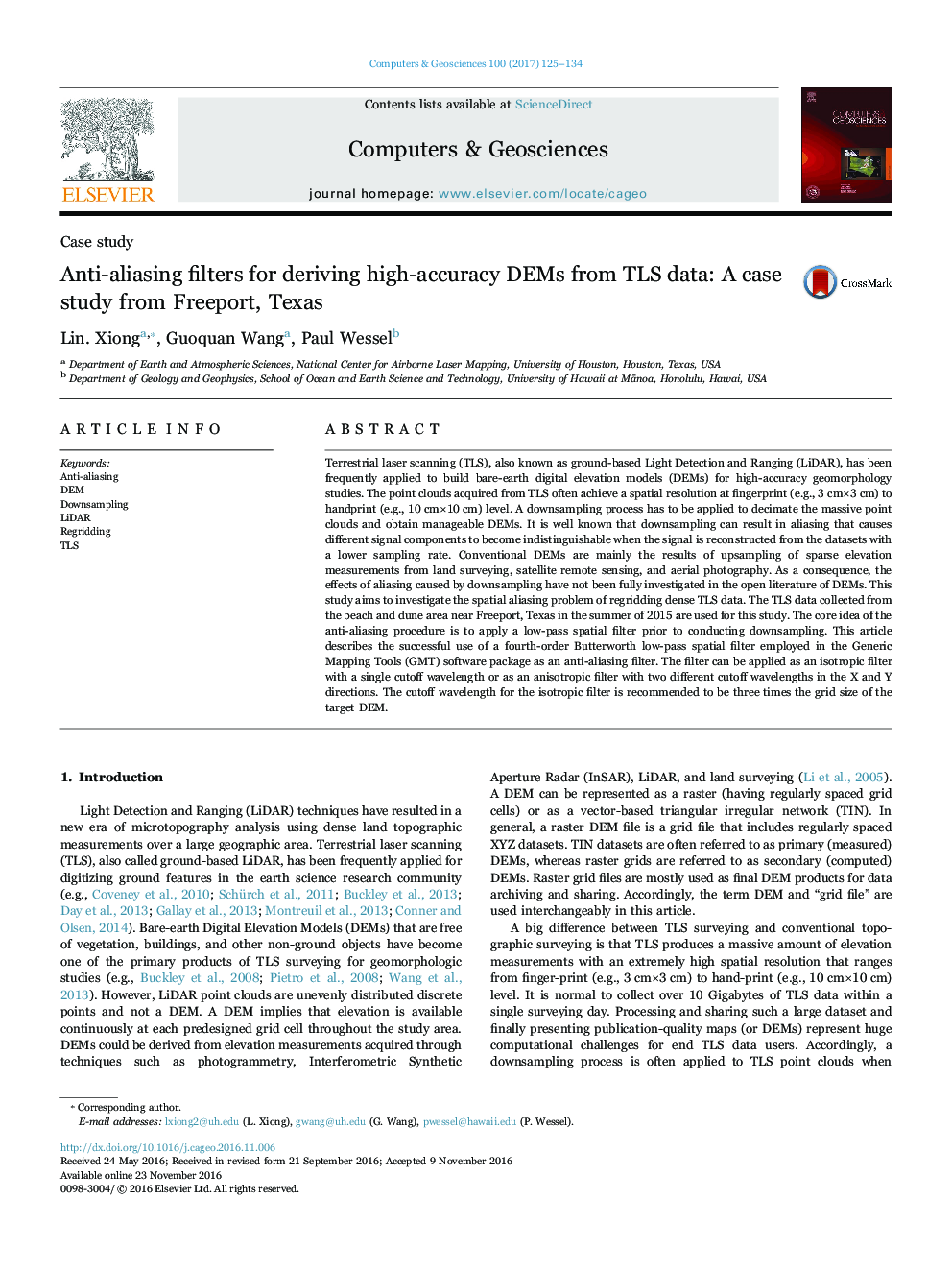| کد مقاله | کد نشریه | سال انتشار | مقاله انگلیسی | نسخه تمام متن |
|---|---|---|---|---|
| 4965400 | 1448284 | 2017 | 10 صفحه PDF | دانلود رایگان |
عنوان انگلیسی مقاله ISI
Anti-aliasing filters for deriving high-accuracy DEMs from TLS data: A case study from Freeport, Texas
دانلود مقاله + سفارش ترجمه
دانلود مقاله ISI انگلیسی
رایگان برای ایرانیان
موضوعات مرتبط
مهندسی و علوم پایه
مهندسی کامپیوتر
نرم افزارهای علوم کامپیوتر
پیش نمایش صفحه اول مقاله

چکیده انگلیسی
Terrestrial laser scanning (TLS), also known as ground-based Light Detection and Ranging (LiDAR), has been frequently applied to build bare-earth digital elevation models (DEMs) for high-accuracy geomorphology studies. The point clouds acquired from TLS often achieve a spatial resolution at fingerprint (e.g., 3Â cmÃ3Â cm) to handprint (e.g., 10Â cmÃ10Â cm) level. A downsampling process has to be applied to decimate the massive point clouds and obtain manageable DEMs. It is well known that downsampling can result in aliasing that causes different signal components to become indistinguishable when the signal is reconstructed from the datasets with a lower sampling rate. Conventional DEMs are mainly the results of upsampling of sparse elevation measurements from land surveying, satellite remote sensing, and aerial photography. As a consequence, the effects of aliasing caused by downsampling have not been fully investigated in the open literature of DEMs. This study aims to investigate the spatial aliasing problem of regridding dense TLS data. The TLS data collected from the beach and dune area near Freeport, Texas in the summer of 2015 are used for this study. The core idea of the anti-aliasing procedure is to apply a low-pass spatial filter prior to conducting downsampling. This article describes the successful use of a fourth-order Butterworth low-pass spatial filter employed in the Generic Mapping Tools (GMT) software package as an anti-aliasing filter. The filter can be applied as an isotropic filter with a single cutoff wavelength or as an anisotropic filter with two different cutoff wavelengths in the X and Y directions. The cutoff wavelength for the isotropic filter is recommended to be three times the grid size of the target DEM.
ناشر
Database: Elsevier - ScienceDirect (ساینس دایرکت)
Journal: Computers & Geosciences - Volume 100, March 2017, Pages 125-134
Journal: Computers & Geosciences - Volume 100, March 2017, Pages 125-134
نویسندگان
Lin. Xiong, Guoquan Wang, Paul Wessel,